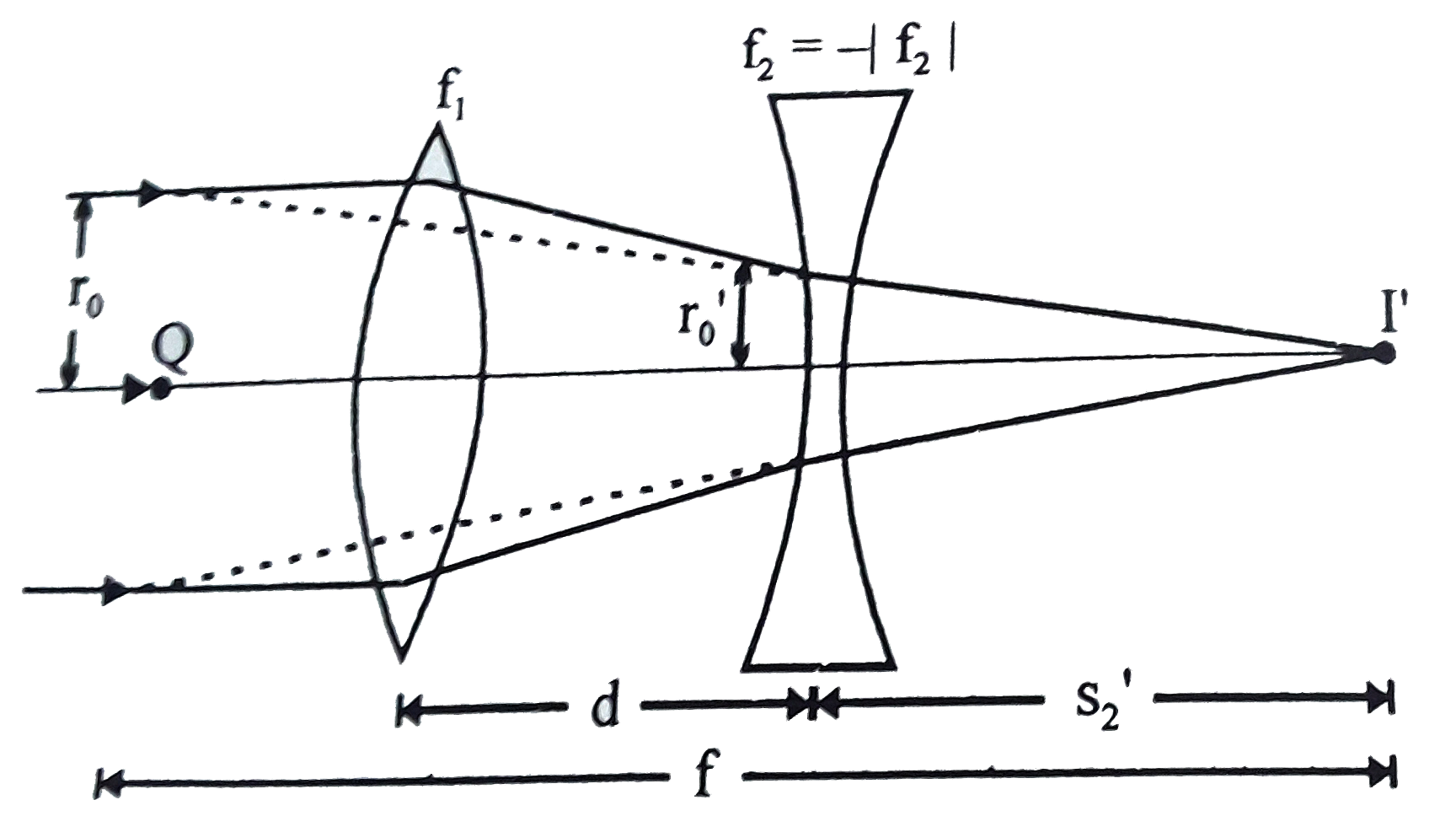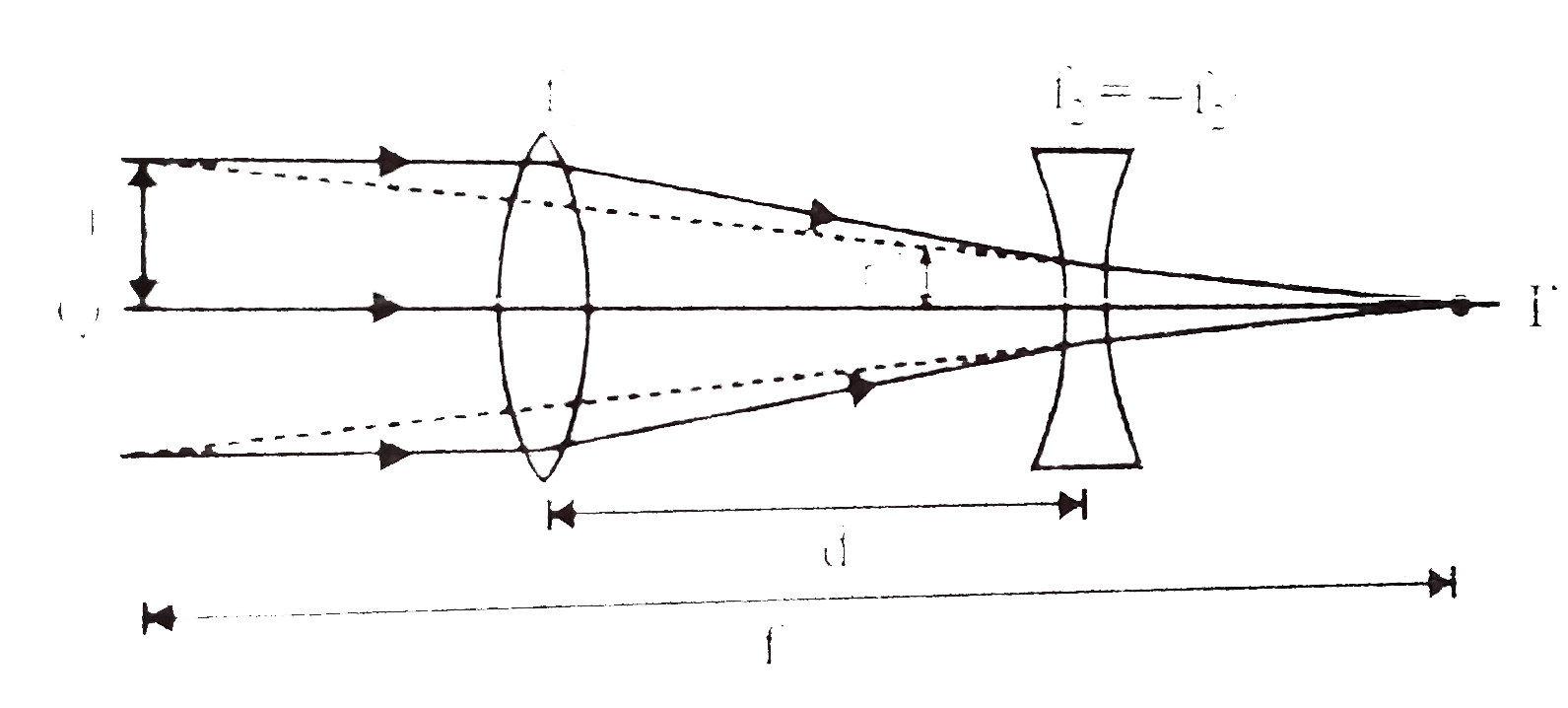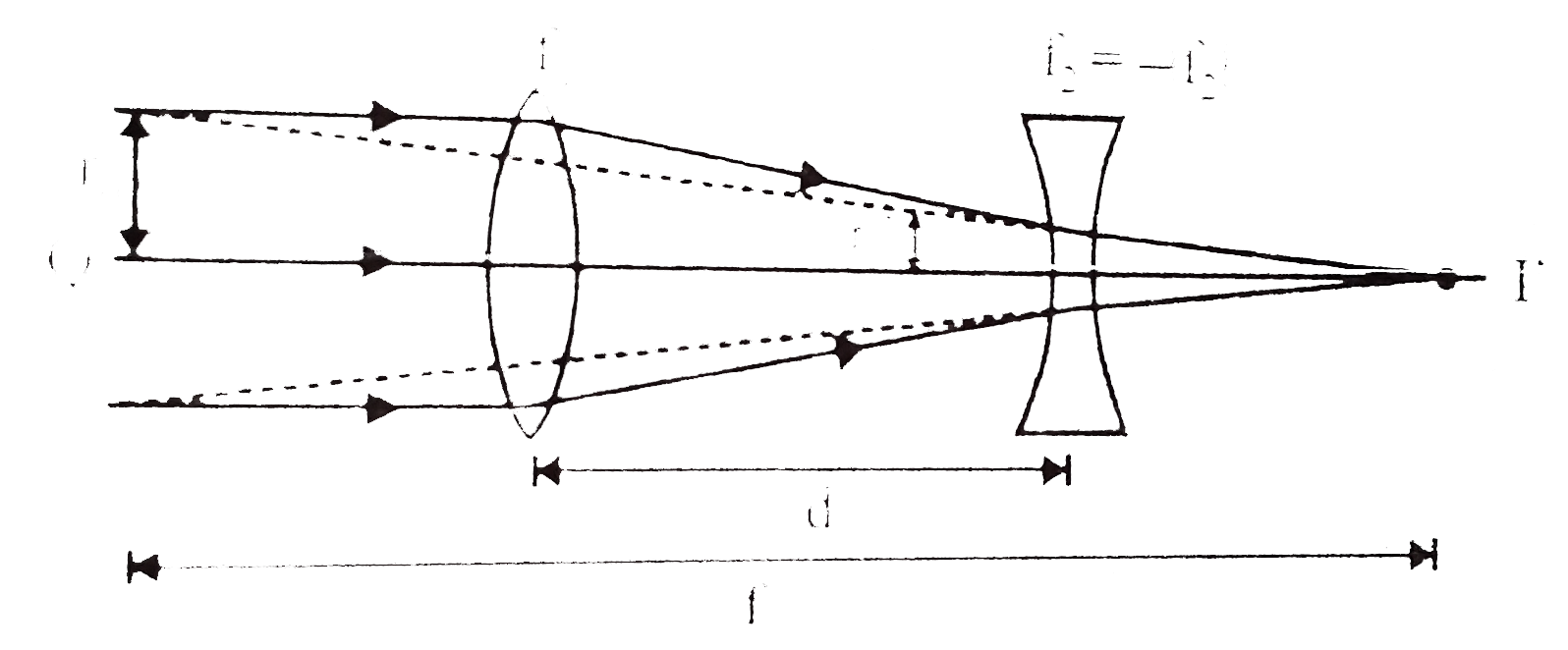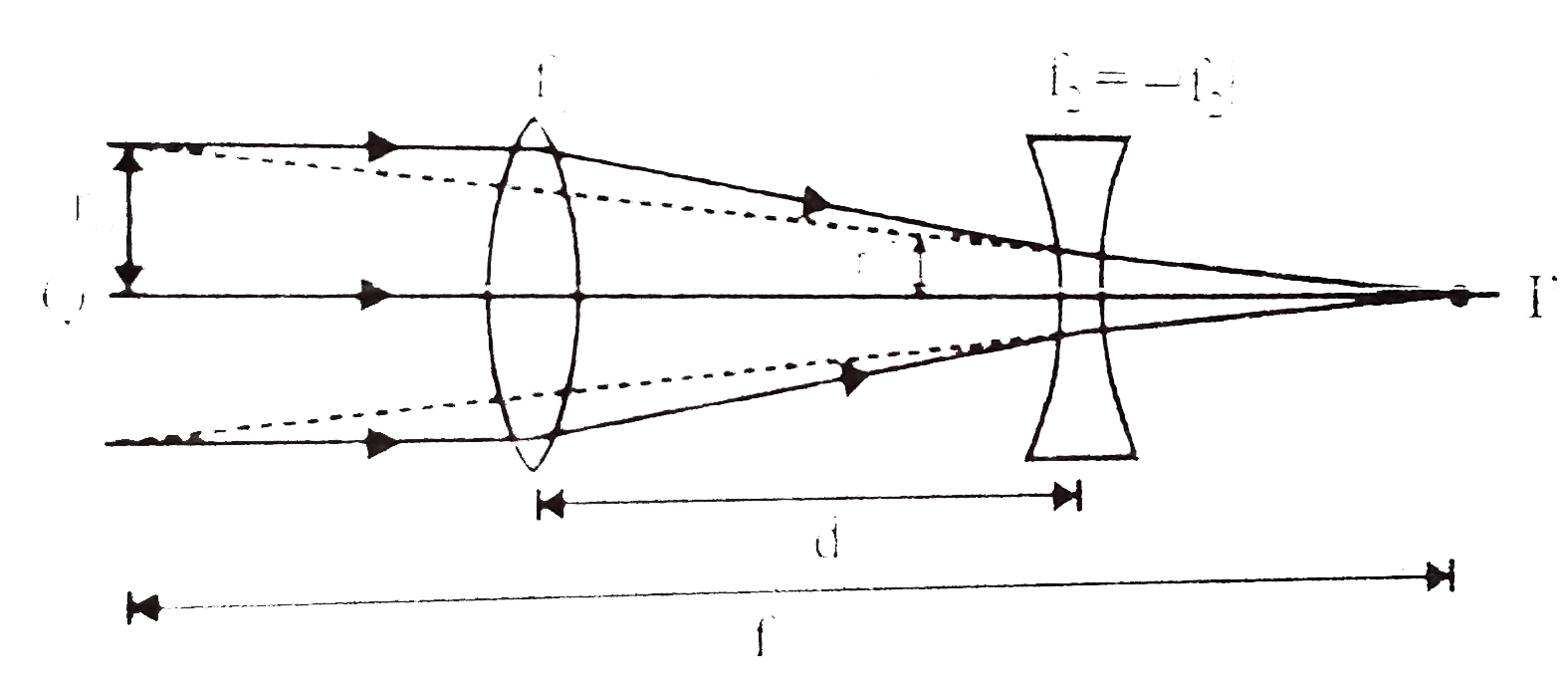Focal Length of Zoom Lens : Figure shows a simple version of a zoom lens. The conerging lens has focal length f1, and the diverging lens has focal length f2=−|f2|. The two lenses are separated by a variable distance d that is always than f1. Also, the magnitude of the focal length of the diverging lens satisfies the inequality |f2|>(f1−d). To determine the effective focal length of the combination lens, consider a bundle of parallel rays of radius r0 entering the converging lens. It can be shown that the radius of the ray bundle decreases to r′0=r0(f1−d)f1 at the point it enters the diverging lens. Final image I' is formed a distance s′2=|f2|(f1−d)(|f2|−f1+d) to the rifgt of the diverging lens.
It the rays that emerge from the diverging lens and reach the final image point are extended backward to the left of the diverging lens, they will eventually expand to the original radius r0 at some point Q. The distance from the final image I' to the point Q is the effective focal length f the lens combination , if the combination were replaced by a single lens of focal length f placed at Q, parallel rays would still be brought to a focus at I'. The effective focal length is given by f=f1|f2|(|f2|−f1+d)
Assume that f1=12.0cm,f2=−18.0cm, and the separation d is adjustable between 0 and 3.0 cm.

The final image distance s′2 will be such that
0≤s′2≤|f2|
|f2|≤s′2≤2|f2|
2|f2|≤s′2≤∞
any of the above three options
The correct Answer is:B
s′2=|f2|(|f2|f1−d−1)
Related Playlists
- BOOK - BANSALCHAPTER - TEST PAPERSEXERCISE - PHYSICS SECTION - 1 [MULTIPLE CORRECT CHOICE TYPE]6videos
TEST PAPERS
- BOOK - BANSALCHAPTER - TEST PAPERSEXERCISE - CHEMISTRY SECTION - 2 PART A [SINGLE CORRECT CHOICE TYPE]8videos
TEST PAPERS
- BOOK - BANSALCHAPTER - TEST PAPERSEXERCISE - MATHS SECTION-3 PART-C [INTEGER TYPE]5videos
TEST PAPERS
- BOOK - BANSALCHAPTER - PROBABILITYEXERCISE - All Questions1videos
PROBABILITY
- BOOK - BANSALCHAPTER - THERMODYNAMICSEXERCISE - Match the column7videos
THERMODYNAMICS
Knowledge Check
- Question 1 - Select One
The following figure from shows version of a zoom.The converging lens has a focal length f1and the diverging lens has focal length f2=−|f2|.the two lens are separated by a variable distance d that it is always less than f1,also the magnitude of the focal length of the diverging lens satisfies the inequality
|f2|>(f1−d).

if the rays that emerge form the diverging lens and reach the final image point are extended backward to the left of the diverging lens,they will eventually expand to the original radius roat the same point.Q.To determine the effective focal length of the combination lens consider a bundle of parallel rays of radius r0entering the emerging lens.
To the right of the diverging lens the final image I'formed at a distance S2'given byA(f1−f2)df1−f2+dB(f1−d)f2|f2|+d−f1Cf1−f2+df1−f2D(d−f1)f2f2−f1−d - Question 1 - Select One
The following figure from shows version of a zoom.The converging lens has a focal length f1and the diverging lens has focal length f2=−|f2|.the two lens are separated by a variable distance d that it is always less than f1,also the magnitude of the focal length of the diverging lens satisfies the inequality
|f2|>(f1−d).

if the rays that emerge form the diverging lens and reach the final image point are extended backward to the left of the diverging lens,they will eventually expand to the original radius roat the same point.Q.To determine the effective focal length of the combination lens consider a bundle of parallel rays of radius r0entering the emerging lens.
AT the point where ray enters the diverging lens ,the radius of the ray bundle decreases toAr0'=(f1−df1)r0Br0=(f1−df1)r0Cr0'=(f1−f2f1)r0Dr'0=r0 - Question 1 - Select One
The following figure from shows version of a zoom.The converging lens has a focal length f1and the diverging lens has focal length f2=−|f2|.the two lens are separated by a variable distance d that it is always less than f1,also the magnitude of the focal length of the diverging lens satisfies the inequality
|f2|>(f1−d).

if the rays that emerge form the diverging lens and reach the final image point are extended backward to the left of the diverging lens,they will eventually expand to the original radius roat the same point.Q.To determine the effective focal length of the combination lens consider a bundle of parallel rays of radius r0entering the emerging lens.
the effective focal length f is given byAf1|f2||f2|−f1+dBf1f2f1−f2−dCf1f2−f1+dDf2f1+f2+d
Similar Questions
A diverging lens has a focal length of 0.10m. The power of this lens will be:
View SolutionA thin convex lens has focal length f1 and a concave lens has focal length f2. They are kept in contact. Now, match the following two columns.
 View Solution
View SolutionA thin convex lens has focal length f1 and a concave lens has focal length f2. They are kept in contact. Now, match the following two columns.
 View Solution
View SolutionA converging lens of focal length f1 is placed coaxially in contact with a diverging lens of focal length f2((f1>f2). Determine the power and nature of the combination in terms of f1 and f2.
View SolutionA20cm convex lens is placed in contact with a diverting lens of unknown focal length ,The lens combination acts as a converging lens and has a length of30cm.What is the focal length of the diverging lens.
View SolutionA converging lens of focal length 40 cm is kept in contact with a diverging lens of focal length 30 cm. Find the focal length of the combination.
View SolutionA convex lens of focal length f1 is kept in contact with a concave lens of focal length f2. Find the focal length of the combination.
View Solution

